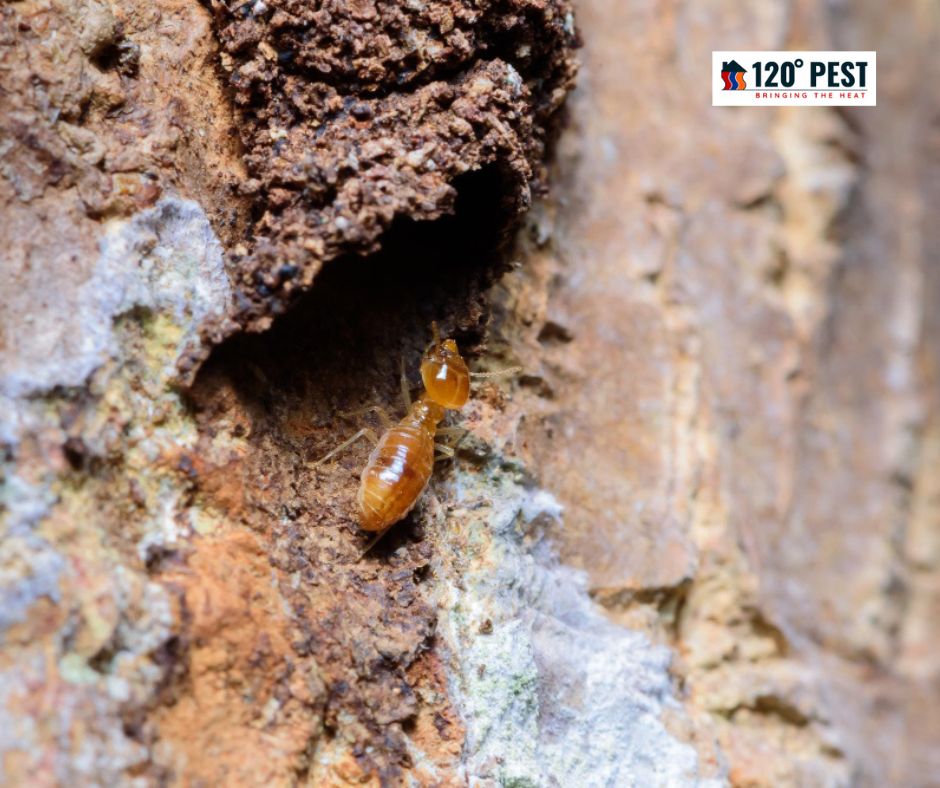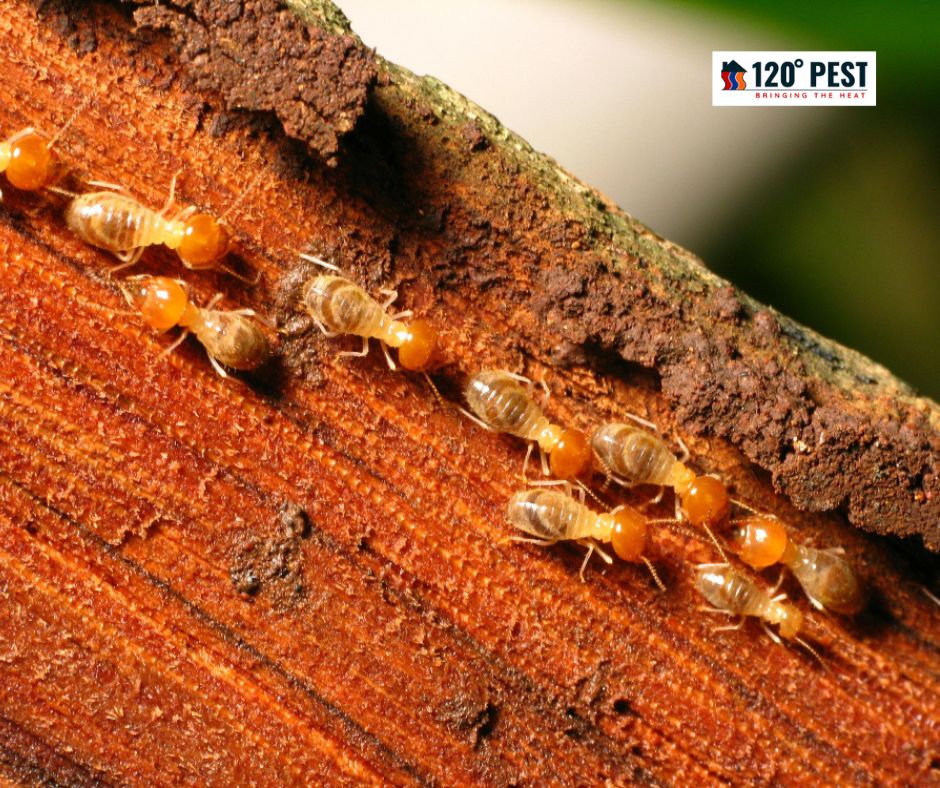Termite infestations can cause significant damage to homes and buildings if left unchecked.
These tiny insects feed on wood and other cellulose materials, often causing structural weakening and financial strain on property owners.
Recognizing the signs of a termite infestation early on is crucial for effective pest control and preventing extensive damage.
Here are five common signs of termite infestation that you shouldn’t ignore.
Mud Tubes:
Mud tubes, often resembling narrow tunnels, are a clear indication of active termite activity.
Constructed by termites using a mixture of soil, saliva, and waste, these tubes provide essential moisture and protection as the insects travel between their nests and food sources.
Typically found along building foundations, walls, or wooden structures, mud tubes can vary in size and complexity depending on the extent of the infestation.
Detecting these tubes early on is crucial for prompt intervention to address the termite problem effectively.
Swift action, coupled with professional inspection and treatment, is critical to mitigating damage and safeguarding your property against further termite infestations.
Moreover, the presence of mud tubes can offer valuable insights into the behavior and extent of the termite colony infesting your property.
By carefully examining the size, location, and condition of the tubes, pest control experts can gain a better understanding of how termites are accessing your home and the potential scope of the infestation.
Additionally, the appearance of mud tubes may provide clues about the species of termites present and their preferred nesting sites.
Understanding these factors is essential for developing an effective treatment plan tailored to the specific characteristics of the infestation.
Regular monitoring and maintenance can prevent future termite problems and preserve the integrity of your property.
Hollowed or Damaged Wood:

Hollowed or damaged wood is a telltale sign of a termite infestation, as these pests feed on wood from the inside out, gradually weakening its structure.
This damage can occur over an extended period without any apparent external indications, making it imperative to conduct regular inspections.
In addition to tapping on wooden surfaces to listen for hollow sounds, visually inspecting for signs of damage is crucial.
Look for wood that appears discolored, warped, or sagging, as these are often indicative of termite activity.
Pay close attention to areas where wood comes into contact with soil or moisture, as termites are attracted to these environments.
Inspecting both interior and exterior wooden structures, including walls, floors, ceilings, and furniture, allows for comprehensive assessment and early detection of termite infestations.
Prompt identification and treatment are essential to prevent further damage and preserve the integrity of your property’s wooden elements.
Discarded Wings:
Discarded wings are a clear indication of termite activity and are often found near window sills, doors, or light sources.
Termite swarmers, also known as alates, emerge from mature colonies to establish new ones.
These winged termites resemble flying ants and are attracted to sources of light.
After mating, swarmers shed their wings, leaving behind piles of discarded wings as they search for a suitable nesting site.
Finding these discarded wings indoors is a strong indication that an active termite colony is nearby.
It’s crucial to promptly identify the source of the swarm and take appropriate measures to eliminate the termite infestation.
Failure to address the infestation promptly can lead to significant damage to your property’s wooden structures and necessitate costly repairs.
Accumulation of Frass:
The accumulation of frass, which refers to termite droppings or fecal matter, is a significant indicator of termite activity within a property.
As termites tunnel through wood to feed, they produce small pellets of excrement that they push out of their galleries or kick out through tiny openings.
Frass is commonly found in piles near termite entry points, such as cracks, crevices, or holes in walls or wooden structures.
These termite droppings typically resemble tiny grains of sand or sawdust and may vary in color depending on the type of wood being consumed.
If you notice an accumulation of frass in your home or building, it’s a clear sign of termite activity that should be addressed promptly.
Ignoring this sign could lead to further damage and complications, making it essential to take immediate action to eliminate the termite infestation and prevent future problems.
Spongy or Buckling Floors:
In the advanced stages of a termite infestation, wooden floors can exhibit concerning signs such as feeling spongy or developing a buckling appearance.
This deterioration stems from termites hollowing out the interior of wooden floorboards, causing them to lose their structural integrity.
Spongy or buckling floors serve as precise indicators of severe termite damage that demands immediate attention.
If left untreated, the structural stability of the building can be compromised, potentially resulting in costly repairs and safety hazards.
Therefore, it’s crucial to promptly address any signs of spongy or buckling floors to mitigate further damage and ensure the safety and integrity of the property.
Conclusion
Termite infestations can cause extensive damage to homes and buildings if not detected and addressed early.
By recognizing the common signs of termite activity, such as mud tubes, hollowed wood, discarded wings, frass accumulation, and spongy floors, property owners can take proactive measures to mitigate the damage and eradicate the pests.
Regular inspections by qualified pest control professionals are essential for early detection and effective termite management.
Ignoring the signs of a termite infestation can lead to costly repairs and compromise the structural integrity of your property.
Don’t wait until it’s too late – if you suspect a termite infestation, contact us today for professional assistance at 120 Pest.
FAQs
What are mud tubes, and why are they significant in detecting termite infestations?
Mud tubes are narrow tunnels constructed by termites using a mixture of soil, saliva, and waste. They serve as pathways for termites to travel between their nests and food sources. Detecting mud tubes is crucial as they indicate active termite activity and provide insights into the extent and behavior of the infestation.
How can I identify hollowed or damaged wood caused by termites?
Hollowed or damaged wood is a common sign of termite infestation. To identify it, tap on wooden surfaces to listen for hollow sounds and visually inspect for discoloration, warping, or sagging. Pay particular attention to areas where wood comes into contact with soil or moisture, as termites are attracted to these environments.
What are discarded wings, and why do they indicate termite activity?
Termite swarmers, also known as alates, leave behind discarded wings after they mate and establish new colonies. Finding discarded wings near windowsills, doors, or light sources indicates the presence of an active termite colony nearby, as swarmers are attracted to light sources.
What is frass, and how does its accumulation indicate termite activity?
Frass refers to termite droppings or fecal matter, which termites push out of their galleries or kick out through tiny openings as they tunnel through wood to feed. Accumulation of frass near termite entry points, such as cracks or crevices, signifies termite activity within a property.
Why are spongy or buckling floors concerning signs of termite infestation?
Spongy or buckling floors indicate severe termite damage in the advanced stages of an infestation—termites hollow out the interior of wooden floorboards, causing them to lose structural integrity. Prompt attention to these signs is crucial to prevent further damage and ensure the safety and integrity of the property.
How do I know if I have a termite infestation if I don’t see any visible signs?
Termite infestations can sometimes be challenging to detect, especially in the early stages when there are no visible signs. However, other indicators, such as mud tubes, discarded wings, or spongy floors, may only sometimes be apparent. In such cases, scheduling a professional termite inspection is recommended. Trained pest control experts can use specialized equipment and techniques to detect hidden termite activity, even in the absence of visible signs.
Can I treat a termite infestation on my own, or do I need professional help?
While there are DIY termite control products available, effectively treating a termite infestation often requires professional assistance. Termite colonies can be complex and extensive, making thorough elimination challenging without the expertise and specialized equipment of pest control professionals. Additionally, professional treatments typically offer long-lasting results and may include preventative measures to reduce the risk of future infestations.
How long does it take to eliminate a termite infestation?
The time it takes to eliminate a termite infestation depends on several factors, including the size of the colony, the extent of the damage, and the treatment method used. In some cases, a single treatment may be sufficient to eradicate the infestation, while in others, multiple treatments or ongoing monitoring may be necessary. Working with a pest control professional can help determine the most effective treatment plan for your specific situation and provide guidance on the expected timeline for elimination.
What should I do if I suspect a termite infestation on my property?
If you suspect a termite infestation on your property, it’s essential to act quickly. Contact a licensed pest control professional to schedule a thorough inspection and evaluation. Pest control experts can assess the extent of the infestation, identify the termite species involved, and recommend an appropriate treatment plan tailored to your specific situation. Prompt action is critical to minimizing damage and protecting your property from further infestations.




